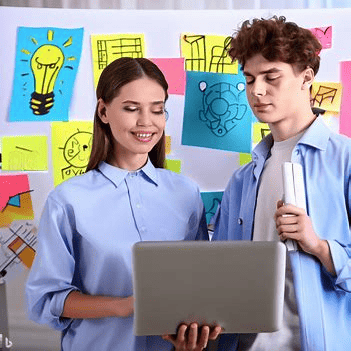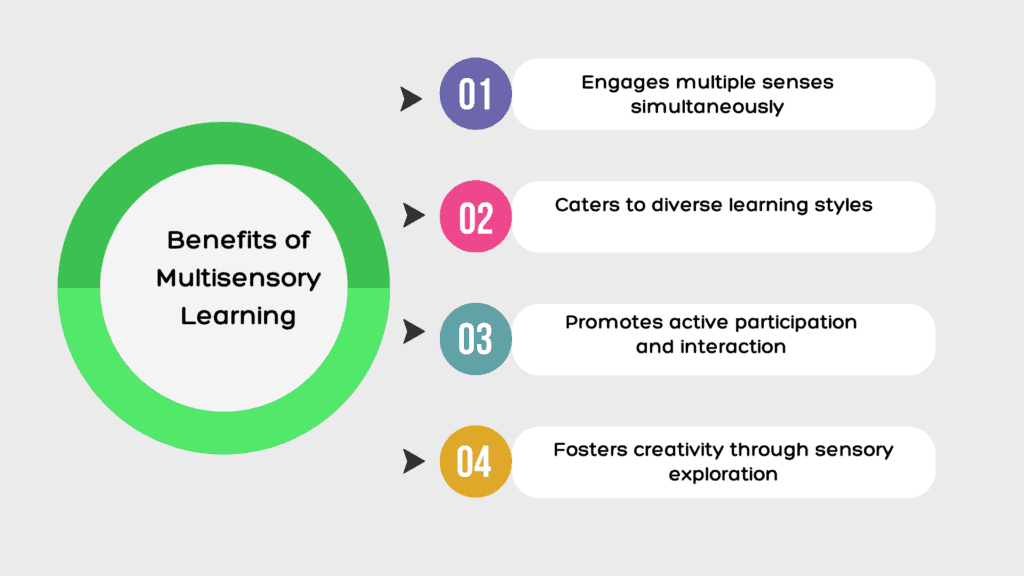Table of Contents
Key Takeaways
- Universal Design for Learning (UDL) is an educational framework that aims to provide all students, regardless of their abilities or learning styles, with equal opportunities to learn and succeed.
- UDL project ideas can help teachers create inclusive and engaging learning experiences for their students. These projects should incorporate multiple means of representation, expression, and engagement to cater to diverse learners.
- One UDL project idea is to have students create multimedia presentations on a topic of their choice. This allows them to choose a format that suits their learning style and interests, while also developing their research, communication, and technology skills.
- Another UDL project idea is to have students create a digital portfolio to showcase their learning progress and achievements. This project promotes self-reflection, goal-setting, and metacognitive skills, while also allowing students to express themselves in a variety of ways.
- Collaborative projects, such as creating a class newspaper or organizing a community service event, can also be effective UDL projects. These projects encourage teamwork, communication, and problem-solving skills, while also fostering a sense of belonging and community among students.
- UDL project ideas should be flexible and adaptable to meet the diverse needs of students. Teachers should provide options and choices within the projects, allowing students to personalize their learning experience and demonstrate their understanding in different ways.
- It is important for teachers to provide clear instructions, scaffolding, and support throughout the UDL projects. This helps students understand the expectations and requirements, and ensures that they can successfully complete the projects.
- UDL projects should be assessed using multiple measures and criteria that align with the project goals and objectives. Teachers should provide constructive feedback and opportunities for reflection and revision, allowing students to continuously improve their work.
- By incorporating UDL project ideas into their teaching practices, teachers can create a more inclusive and equitable learning environment. These projects empower students to take ownership of their learning, develop essential skills, and showcase their unique abilities and talents.

Table below presents a selection of unique UDL project ideas, their descriptions and potential applications. Examples include:
- Interactive Educational Videos – engage learners through quizzes, annotations, and branching scenarios. Benefits for online courses, flipped classrooms, and self-paced learning.
- Accessible Gamification – games with customizable controls, alternative input methods, and adaptive difficulty levels. Inclusive for people with disabilities and therapeutic training for rehabilitation programs.
- Digital Storytelling Platforms – create immersive stories using text, images, audio, and video. Developing literacy skills, fostering creativity and expression.
- Virtual Reality Field Trips – simulate educational field trips to different locations worldwide. Accessing inaccessible destinations due to physical or financial limitations.
- Collaborative Project Spaces – online platforms for students to collaborate on projects in real-time. Supporting group work in distance learning environments.
- Adaptive Learning Management – systems that personalize instruction based on individual learner needs and preferences. Catering to diverse learning styles and abilities.
These project ideas aren’t just for education settings. They can be used for corporate training programs or community initiatives.
UDL is a concept that began in the 1990s. David Rose, Anne Meyer, and David H. Rose’s pioneering work started the principle and framework for UDL, leading to its acceptance in educational settings worldwide.
This article gives an insight into the UDL project ideas that promote inclusion and accessibility. Implementing these ideas can give learners of all backgrounds and abilities engaging and meaningful learning experiences.
Udl Project Idea 1: Incorporating Technology in the Classroom

Technology in the classroom can boost learning experiences. Educators can make a fun and stimulating environment for students by using various tools and resources. Here’s a summary of UDL Project Idea 1:
Technology Tools:
- Interactive whiteboards, to facilitate visual learning and collaboration.
- Educational apps and software, to give personalized learning experiences.
- Online discussion boards, to improve communication and promote participation.
- Virtual reality headsets, to immerse students in virtual environments for learning.
It’s important to ensure accessibility for all learners. Use closed captions, text-to-speech features, and adjustable font sizes. Leverage technology as a tool, rather than relying on it. Align chosen technology with curriculum goals to maximize its impact.
This UDL project idea will make learning so immersive, students won’t even feel they’re in a classroom!
Udl Project Idea 2: Creating Multisensory Learning Materials

To create multisensory learning materials in the UDL project idea 2, explore the benefits of engaging multiple senses in the learning process. By incorporating various sensory experiences, learners can enhance their understanding and retention of information.
Benefits of Multisensory Learning
Multisensory learning offers numerous benefits. It:
- Engages multiple senses simultaneously
- Caters to diverse learning styles
- Promotes active participation and interaction
- Fosters creativity through sensory exploration
It’s particularly effective for teaching complex concepts. It provides multiple pathways for information processing, and can help students with different abilities more effectively.
As an example, I had a student with dyslexia who struggled with reading comprehension. We used multisensory techniques such as visual aids, movement activities, and hands-on materials. Engaging his senses in the learning process helped him understand abstract ideas better. This illustrates how powerful multisensory learning can be for students’ academic development and confidence.
Who needs a rigid classroom? Flexible seating options like musical chairs, but without the music or chairs, can make a real difference!
Udl Project Idea 3: Implementing Flexible Seating Options
To implement flexible seating options in your UDL project, explore how flexible seating enhances learning. Discover the benefits of incorporating adaptable seating arrangements to empower student engagement and create a more inclusive learning environment.
How Flexible Seating Enhances Learning
Flexible seating boosts the learning experience in educational settings. It allows students to choose how and where they sit. This increases engagement, collaboration, comfort, and independence.
- Engagement: Students can take ownership of their learning environment. When they can pick a seating option that suits them, they are more likely to be involved.
- Collaboration: Moving around and choosing seating encourages teamwork and cooperation. It could be sitting at a round table or gathering on a rug.
- Comfort: Traditional classroom setups don’t always consider physical comfort. Adaptable furniture does, so students can pick the most comfortable position.
- Independence: Giving students seating options empowers them to make choices. This teaches them how surroundings affect learning and they can adjust.
Plus, flexible seating creates a nurturing atmosphere. Sensory-seeking children can move without disruption.
To make the most of flexible seating, educators can:
- Provide variety: Stability balls, standing desks, bean bags or floor cushions.
- Encourage responsibility: Keep seating areas clean and orderly.
- Allow flexibility: Let students switch seating throughout the day.
This student-centered approach values individuality and creates an immersive and comfortable learning experience.
Udl Project Idea 4: Promoting Collaborative Group Work

To promote collaborative group work in UDL classrooms, utilize strategies for successful group work. These strategies will enhance engagement, participation, and learning outcomes.
Strategies for Successful Group Work in Udl classrooms
Achieving successful group work in Udl classrooms? There’s a strategy for that! Here’s how:
- Generate a welcoming and embracing space, where everyone feels valued and confident to take part.
- Make sure communication & collaboration are strong by assigning roles & responsibilities.
- Offer reflection and feedback to nurture progress.
These strategies help with teamwork, foster problem-solving skills, and offer students a feeling of ownership. Plus, different views and ideas can be shared, leading to more creative solutions. Remember, success in group work relies on a setting that backs cooperation & personal development.
Lesson planning just got more universal! Inclusivity plus curriculum – what could be better?
Udl Project Idea 5: Using Universal Design Principles in Lesson Planning
To ensure inclusive and effective lesson planning, leverage the power of universal design principles in Udl project idea 5. Discover the importance of incorporating universal design to benefit all students.
Importance of Universal Design for All Students
The significance of Universal Design for All Students can’t be ignored. It ensures that all students, regardless of their capabilities or disabilities, have equal access to learning materials and activities. Incorporating UDL into lesson planning enables educators to create an inclusive learning environment, which caters to the diverse needs of their students.
UDL offers multiple means of representation, such as providing visual aids, audio recordings, or hands-on activities. Additionally, it provides multiple means of engagement, by incorporating different tasks and activities that appeal to different learning styles and interests.
Plus, UDL promotes multiple means of action and expression. This allows students to demonstrate their understanding and knowledge through various ways, such as written assignments, presentations, or group projects. With these options, teachers give students the chance to show their talents and strengths.
UDL also benefits neurodiverse learners. A study by the National Center on Assessment and Accountability for Special Education (NCAASE) found that using UDL principles in lesson planning improves the academic outcomes of all students. This includes general education students and those with disabilities. When teachers used strategies like flexible grouping and differentiated instruction based on student needs, significant academic growth was observed.
Frequently Asked Questions
1. What is UDL?
UDL stands for Universal Design for Learning. It is an educational framework that provides flexible approaches for teaching and learning to meet the diverse needs of all students.
2. Why are UDL project ideas important?
UDL project ideas are important because they allow educators to create inclusive and engaging learning experiences for all students. They promote accessibility, provide multiple means of representation, action, and expression, and allow for individualized learning paths.
3. How can I come up with UDL project ideas?
There are several ways to come up with UDL project ideas. You can start by identifying the learning goals and objectives, considering the diverse needs of your students, and exploring different types of media, technology, and teaching strategies that can support the principles of UDL.
4. Can you provide some examples of UDL project ideas?
Sure! Some examples of UDL project ideas could include creating multimedia presentations, designing interactive online simulations, developing hands-on experiments, conducting collaborative research projects, or using assistive technology to support students with disabilities.
5. How do UDL project ideas benefit students?
UDL project ideas benefit students by promoting engagement, motivation, and ownership of learning. They provide students with multiple ways to access information, demonstrate their understanding, and express their thoughts and ideas. UDL projects also foster a sense of inclusivity and support the development of 21st-century skills.
6. Are there any resources available to help me implement UDL project ideas?
Absolutely! Many websites, educational platforms, and professional organizations provide resources and guidelines for implementing UDL project ideas. Some examples include the National Center on Universal Design for Learning, CAST, and the UDL Exchange.
How can inclusive learning be incorporated into an egg drop project for all students?
Inclusive learning can be integrated into egg drop project ideas by ensuring that all students have the opportunity to participate regardless of physical ability. This can be achieved by providing different design options, encouraging collaboration, and adapting the project to accommodate diverse learning styles and strengths.
Conclusion
The potency of Udl Projects Ideas in fostering inclusive education is undeniable. These creative ideas provide varied learning chances that fit the unique needs and capabilities of each student. By introducing Udl projects, educators can form an inclusive classroom atmosphere where every student feels appreciated and involved.
Udl project ideas generate a range of advantages for both teachers and students. They support cooperation, critical thinking, and problem-solving skills among students. Plus, they stimulate creativity and self-expression. These projects also urge students to take charge of their learning and build essential life skills, such as time management and organization.
A special feature of Udl project ideas is their capability to address different kinds of learners. Whether a student has a learning disability or shines academically, these projects can be personalized to meet individual requirements. By providing multiple methods of representation, expression, and engagement, Udl projects guarantee that all students have identical access to knowledge and chances for success.
Including Udl project ideas in the curriculum has been confirmed to have positive impacts in advancing inclusive education. A study by the National Center on Universal Design for Learning showed that schools that applied Udl projects experienced improved academic performance, higher student motivation, and decreased dropout rates among mixed student populations.
References:
Also Read: